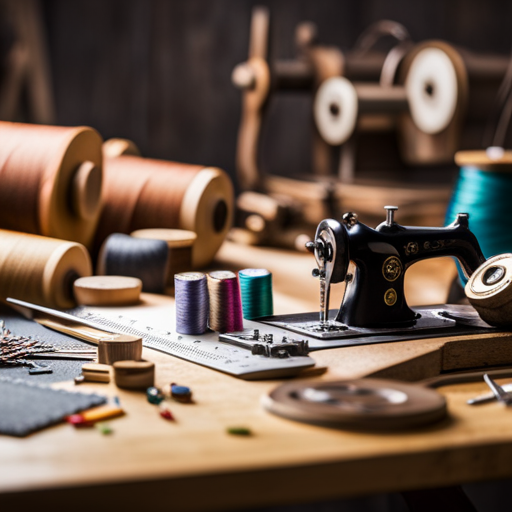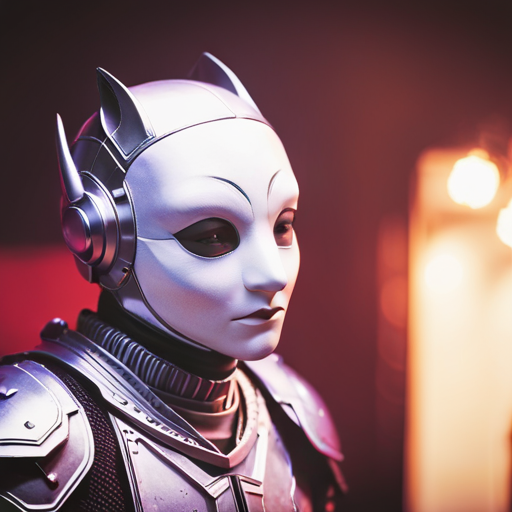Hand-Sewing Vs. Machine Sewing for Costumes

In the world of costume creation, the debate between hand-sewing and machine sewing is a timeless tug-of-war. Each technique boasts its own set of advantages and drawbacks, prompting designers and artisans to weigh their options carefully.
Whether it’s the allure of traditional craftsmanship or the efficiency of modern technology, the choice between the two methods is a pivotal one.
This article delves into the intricacies of hand-sewing versus machine sewing for costumes, shedding light on the key considerations that influence this perennial conundrum.
Time Efficiency
The time efficiency of hand-sewing compared to machine sewing is a key consideration in costume production. Machine sewing often outperforms hand-sewing in terms of speed. Machines are capable of stitching at a much faster pace, making them ideal for large-scale costume production where time management is crucial.
In contrast, hand-sewing is a more time-consuming process, requiring meticulous attention to detail and a significant investment of time. However, hand-sewing offers its own advantages in certain situations, particularly when dealing with intricate details or delicate fabrics. It allows for greater precision and control, which can result in a higher quality finish.
Therefore, the choice between hand-sewing and machine sewing in costume production often comes down to a careful evaluation of time efficiency versus the level of detail and craftsmanship required for the specific garment.
Ultimately, effective time management is essential in balancing the benefits of both methods to achieve the desired outcome within the constraints of production schedules.
Cost Considerations
In evaluating the cost considerations between hand-sewing and machine sewing for costumes, it is essential to assess the overall financial implications of the chosen sewing method, taking into account factors such as labor costs, equipment expenses, and material waste. When it comes to the costume budget, the choice between hand-sewing and machine sewing can have a significant impact on the overall financial outlay. While hand-sewing may initially seem cost-effective due to the minimal equipment expenses, it often requires more labor hours, potentially increasing labor costs. On the other hand, machine sewing may involve higher equipment expenses but can lead to significant fabric cost savings and reduced labor hours, ultimately impacting the overall costume budget. To illustrate this further, consider the following table:
| Consideration | Hand-Sewing | Machine Sewing |
|---|---|---|
| Labor Costs | Higher due to time | Potentially lower |
| Equipment Expenses | Minimal | Higher initial cost |
| Fabric Cost Savings | Limited | Potentially higher |
Careful consideration of these cost factors is essential in making an informed decision regarding the most cost-effective sewing method for costumes.
Quality and Durability
When it comes to the quality and durability of costumes, the method of sewing plays a crucial role. Hand-sewn details often boast greater longevity and a higher level of craftsmanship, as they are meticulously created stitch by stitch.
On the other hand, machine sewing can save significant time and is generally more efficient, making it a practical choice for certain costume elements.
Hand-Sewn Details Last
For costumes, hand-sewn details last longer and withstand wear and tear better than machine-sewn ones. The use of intricate stitching techniques in hand-sewn embellishments contributes to their superior quality and durability.
Hand-sewn details are often crafted with greater care and attention to detail, resulting in stronger and longer-lasting embellishments. The precision and control afforded by hand-sewing allow for stronger seams and a more secure attachment of embellishments, ensuring they can endure the rigors of frequent use.
Additionally, hand-sewn details have a timeless elegance and a unique character that adds to the overall durability of the costume. When compared to machine-sewn details, hand-sewn embellishments exhibit a higher level of craftsmanship, making them more resistant to fraying and damage over time.
Machine Sewing Saves Time
The use of machine sewing for costume construction offers a time-saving advantage, but may present challenges in maintaining the same level of quality and durability as hand-sewn details. Time management is a critical consideration in costume production, and machine sewing allows for significant productivity improvements.
With the capability to stitch at a much faster rate than hand-sewing, machine-sewn costumes can be completed in a fraction of the time, contributing to overall project efficiency. However, ensuring that the quality and durability of machine-sewn costumes are on par with hand-sewn ones requires careful attention to detail.
Proper machine settings, thread tension, and regular maintenance are essential to achieve durable and high-quality seams. Balancing time-saving benefits with maintaining craftsmanship is pivotal for successful costume construction when utilizing machine sewing techniques.
Skill and Expertise
Mastering the art of hand-sewing requires precision, patience, and dexterity. It is a skill that takes time and practice to develop, and it allows for a high level of expertise development.
Hand-sewing provides the opportunity for creative expression in costume-making, as it allows for intricate detailing and unique embellishments that may be challenging to achieve with a machine. The expertise in hand-sewing comes from the ability to manipulate the fabric with finesse, creating delicate stitches and intricate designs. This skill is honed through practice and experience, as each stitch requires careful consideration and precision.
Hand-sewing also allows for a deeper connection to the costume-making process, as the sewer is intimately involved in every step of the creation. This hands-on approach fosters a greater understanding of garment construction and fabric manipulation, leading to a higher level of expertise.
While machine sewing certainly has its advantages, the level of skill and expertise required for hand-sewing is unparalleled in its attention to detail and creative potential.
Design Flexibility
When it comes to design flexibility in costume-making, hand-sewing allows for the creation of intricate details and delicate embellishments that can truly elevate the overall aesthetic of the costume.
On the other hand, machine-sewing excels in producing uniform and consistent seams, which is essential for certain costume designs that require precision and symmetry.
The choice between hand-sewing and machine-sewing ultimately depends on the specific design elements and aesthetic goals of the costume.
Hand-Sewing Intricate Details
For creating intricate details with maximum design flexibility, hand-sewing allows costume makers to achieve precision and artistry unmatched by machine sewing. When working with delicate fabrics or intricate designs, hand-sewing provides the control and finesse necessary to execute complex embellishments, such as beading, embroidery, or appliqué. This technique enables the costumers to manipulate the fabric with great dexterity, ensuring that every stitch is perfectly placed to enhance the overall aesthetic of the costume.
Moreover, hand-sewing allows for greater customization, enabling the incorporation of unique and personalized details that may not be achievable with a machine. The ability to hand-sew intricate details provides costume makers with the freedom to bring their creative visions to life, ensuring that every costume is a work of art.
Transitioning into the subsequent section, machine-sewing uniform seams offers its own set of advantages in terms of efficiency and consistency.
Machine-Sewing Uniform Seams
Transitioning from hand-sewing intricate details, machine-sewing uniform seams offers its own distinct advantages in terms of efficiency and consistency for costume making. Utilizing a sewing machine provides precision control over the seam allowance and stitch consistency, resulting in a professional and polished look. This method ensures that each garment piece is assembled with uniformity, essential for creating a cohesive and visually appealing costume. The following table illustrates the benefits of machine-sewing uniform seams:
| Advantages of Machine-Sewing Uniform Seams |
|---|
| Precision Control |
| Consistent Stitching |
Machine-sewing uniform seams not only saves time but also guarantees a high standard of quality, making it an indispensable technique in costume production. The next section will delve into the environmental impact of machine-sewing versus hand-sewing for costumes.
Environmental Impact
The environmental impact of hand-sewing versus machine sewing for costumes is a significant consideration for costume designers and makers. When evaluating the environmental sustainability of sewing methods, it is essential to consider the carbon footprint reduction associated with each technique.
Hand-sewing typically requires fewer resources and energy, resulting in a smaller carbon footprint compared to machine sewing. Hand-sewing does not rely on electricity or consume as much water as machine sewing, making it a more environmentally friendly option. Additionally, hand-sewing often involves the use of natural and biodegradable materials, further contributing to its environmental sustainability.
In contrast, machine sewing can have a higher environmental impact due to the energy consumption and waste generated by the machines. While both hand-sewing and machine sewing are integral to costume production, costume designers and makers should weigh the environmental implications of their chosen sewing methods.
Frequently Asked Questions
Can Machine Sewing Achieve the Same Level of Detail and Precision as Hand-Sewing for Intricate Costume Designs?
Achieving intricate costume designs necessitates precision and detail. Both hand sewing and machine sewing can produce professional results. While beginners may find hand sewing more accessible, experienced sewers can employ advanced costume design techniques with both sewing styles.
How Does the Environmental Impact Differ Between Hand-Sewing and Machine Sewing for Costumes?
The environmental impact of sewing methods varies. Hand-sewing generally consumes less energy and produces minimal waste, offering a more sustainable option. However, machine sewing can be more time-efficient, potentially reducing overall resource consumption.
Are There Certain Types of Fabrics or Materials That Are Better Suited for Machine Sewing Versus Hand-Sewing When Making Costumes?
Certain fabrics are better suited for hand-sewing due to delicate textures and fine details. Machine sewing is ideal for leather costumes, ensuring precision and strength. Understanding the fabric’s unique properties is crucial for choosing the appropriate technique.
Can Beginners With Little Sewing Experience Achieve Professional-Looking Results With a Sewing Machine, or Is Hand-Sewing a Better Option for Them?
For beginners with little sewing experience, achieving professional-looking results with a sewing machine is feasible. Sewing techniques, cost comparison, time commitment, and skill level are important factors to consider when deciding between hand-sewing and machine sewing.
Are There Any Specific Techniques or Styles of Costume Design That Lend Themselves Better to Either Hand-Sewing or Machine Sewing?
When considering costume design, the choice between hand-sewing and machine sewing must align with the intricacy of the design and the fabric selection. Certain techniques, like delicate embellishments, may benefit from the precision of hand-sewing.
Conclusion
In conclusion, the choice between hand-sewing and machine sewing for costumes depends on various factors such as:
- Time efficiency
- Cost considerations
- Quality and durability
- Skill and expertise
- Design flexibility
- Environmental impact
Both methods have their own advantages and drawbacks, and the decision should be based on the specific needs of the costume project.
Like a skilled craftsman meticulously shaping a masterpiece, the choice of sewing method can greatly influence the final outcome of the costume.

Rufus Whitver is a passionate costume artisan and the creative mind behind layuo.com. With a keen eye for detail and a flair for imaginative design, Rufus brings characters to life through the art of costume making. His expertise encompasses a wide range of styles, from historical recreations to fantastical creations. Through layuo.com, Rufus shares insights, tutorials, and a portfolio showcasing his exceptional craftsmanship, inspiring fellow enthusiasts to embark on their own journey into the world of stunning costumes.





